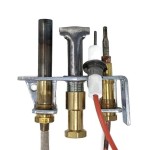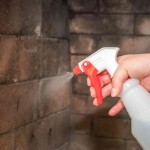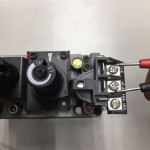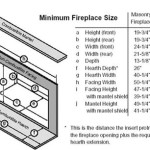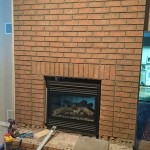How To Install A Wood Burning Fireplace: A Comprehensive Guide
Installing a wood-burning fireplace is a significant home improvement project that can add warmth, ambiance, and value to a property. However, it's a complex undertaking that requires careful planning, adherence to building codes, and a thorough understanding of safety regulations. This article provides a detailed guide on the process of installing a wood-burning fireplace, outlining the key steps involved and emphasizing the importance of professional consultation.
Before embarking on the installation, it's crucial to assess the suitability of the home for a wood-burning fireplace. Factors to consider include the structural integrity of the building, the availability of adequate space for the fireplace and its chimney, and local regulations regarding wood-burning appliances. It's highly recommended to consult with a qualified structural engineer and a building inspector to ensure that the installation complies with all applicable codes and standards.
Selecting the right type of wood-burning fireplace is another critical decision. Options range from traditional masonry fireplaces to prefabricated models, each with its own advantages and disadvantages. Masonry fireplaces offer a classic aesthetic and excellent heat retention, but they are more expensive and require a larger footprint. Prefabricated fireplaces are more affordable and easier to install, but they may not offer the same level of visual appeal or thermal performance. The choice will depend on budget, design preferences, and the specific needs of the homeowner.
Ensuring proper ventilation is paramount for the safe and efficient operation of a wood-burning fireplace. The chimney must be properly sized and constructed to provide adequate draft and prevent the buildup of dangerous gases, such as carbon monoxide. Regular chimney cleaning and inspection are essential to maintain its functionality and prevent the risk of chimney fires.
Key Point 1: Planning and Preparation
The first step in installing a wood-burning fireplace is thorough planning and preparation. This involves obtaining the necessary permits, selecting the appropriate fireplace model, and ensuring that the installation site is properly prepared. Ignoring this step can lead to costly delays, safety hazards, and non-compliance with building codes.
Begin by researching local building codes and regulations pertaining to wood-burning fireplaces. These codes specify requirements for chimney height, clearances from combustible materials, and other safety-related aspects. Obtain the necessary permits from the local building department before starting any work. Failing to do so can result in fines and delays.
Next, carefully select the location for the fireplace. Ideally, it should be situated on an exterior wall to facilitate chimney installation. Consider factors such as room size, furniture placement, and the overall aesthetic of the space. Ensure that there is adequate clearance around the fireplace to prevent fire hazards. Refer to the manufacturer's specifications for recommended clearances.
Once the location is determined, prepare the installation site. This may involve removing existing flooring or wall coverings, reinforcing the floor to support the weight of the fireplace, and ensuring that there are no obstructions in the path of the chimney. Consult with a structural engineer to determine if any structural modifications are necessary.
Key Point 2: Fireplace and Chimney Installation
The installation of the fireplace and chimney is the most critical phase of the project. It requires careful attention to detail and adherence to the manufacturer's instructions. Improper installation can result in safety hazards, poor performance, and costly repairs. This stage is often best left to professionals.
For masonry fireplaces, the foundation must be properly constructed to support the weight of the structure. The firebox, smoke chamber, and chimney flue are then built using refractory bricks and mortar. Ensure that the mortar joints are properly sealed to prevent leaks and air infiltration. The chimney must extend at least three feet above the highest point where it passes through the roof and at least two feet higher than any structure within ten feet.
Prefabricated fireplaces are typically easier to install, as they come as pre-assembled units. However, it's still essential to follow the manufacturer's instructions carefully. The fireplace is installed on a non-combustible hearth, and the chimney is assembled using interlocking sections. Ensure that all connections are properly sealed and that the chimney is securely supported. The installation requires precise measurements and careful alignment of components.
Regardless of the type of fireplace, it is critical to maintain proper clearances from combustible materials. This means ensuring that the fireplace and chimney are kept a safe distance from walls, ceilings, and other flammable surfaces. Use non-combustible materials, such as metal studs and fire-resistant drywall, to protect adjacent structures. Consult the manufacturer's specifications and local building codes for specific clearance requirements.
Key Point 3: Ventilation and Safety Considerations
Proper ventilation and adherence to safety precautions are paramount for the safe and efficient operation of a wood-burning fireplace. Inadequate ventilation can lead to the buildup of carbon monoxide, a deadly gas. Neglecting safety precautions can increase the risk of fire and other hazards.
Ensure that the chimney is properly sized to provide adequate draft. The chimney draft is what pulls smoke and combustion gases out of the fireplace and into the atmosphere. An undersized chimney can result in smoke spillage and poor combustion. Consult with a chimney professional to determine the appropriate chimney size for the fireplace.
Install carbon monoxide detectors in the vicinity of the fireplace. Carbon monoxide is an odorless, colorless gas that can be deadly. Carbon monoxide detectors provide an early warning of dangerous levels of carbon monoxide, allowing occupants to evacuate the premises. Test the detectors regularly to ensure that they are functioning properly.
Regularly clean and inspect the chimney to prevent the buildup of creosote. Creosote is a combustible byproduct of burning wood that can accumulate in the chimney. If creosote buildup becomes excessive, it can ignite and cause a chimney fire. Have the chimney professionally cleaned at least once a year, or more frequently if the fireplace is used regularly. Visually inspect the chimney for any signs of damage or deterioration, such as cracks or loose bricks and seek professional repair if these are noticed.
Always follow safe burning practices. Burn only seasoned firewood that is dry and free of bark and debris. Never burn trash, paper, or other materials that can produce excessive smoke or hazardous emissions. Keep a fire extinguisher nearby and know how to use it. Never leave a fire unattended, and ensure that it is completely extinguished before leaving the house or going to bed.

Can You Install A Wood Stove In Fireplace Direct Stoves

Fireplace Installation Full Service Chimney Serving Kansas City Area

Wood Fireplace S Installation Chimney Sweeps Of America

How To Install A 3000 Wood Fireplace

Heated Up Is A Permit Required To Install Wood Stove In Maryland

New Wood Burning Prefab Fireplaces Complete Fireplace Installs

Wood Stove Installation The Ultimate Diy Companion 2024

Your Guide To Wood Stove Installation Full Service Chimney

Log Burner Installation Guide

Fireplace Installations Near Dc Chimney Experts
Related Posts

